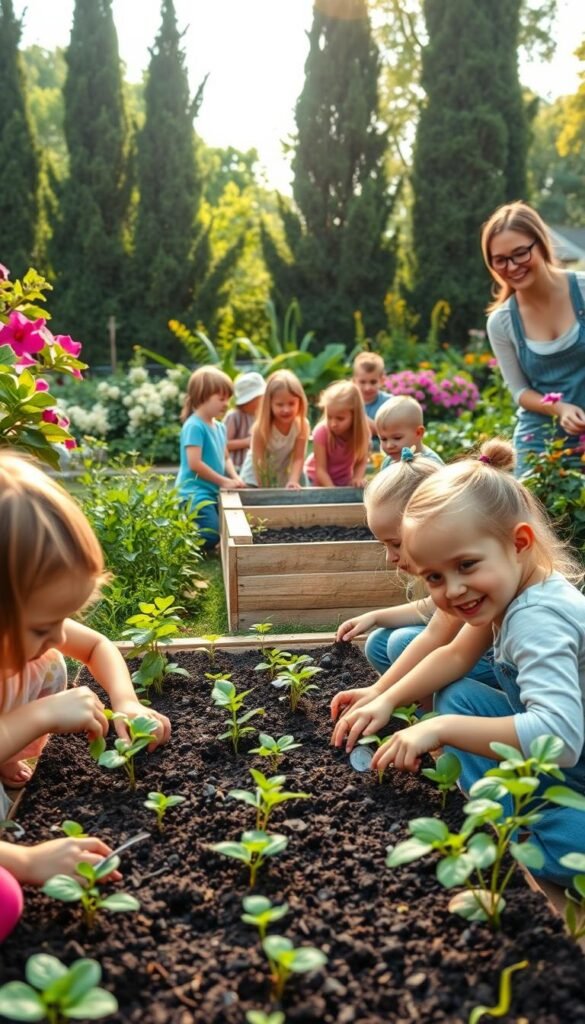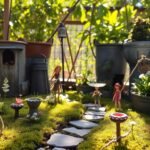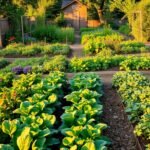Imagine turning your classroom into a living classroom where tiny hands dig into soil and eyes light up watching sprouts emerge. Nature-based learning offers endless opportunities for young minds to connect with the world around them while building foundational skills.
Through interactive gardening experiences, little ones explore textures, colors, and life cycles firsthand. These activities naturally weave together science discovery with counting practice, vocabulary growth, and coordination development. You’ll find simple projects like seed sorting or measuring plant growth become gateways to holistic learning.
Our engaging lesson plans help you create structured yet flexible routines. Whether working with patio containers or classroom window boxes, every activity adapts to your space. Children learn responsibility through daily care routines while developing patience as they wait for their green friends to grow.
Sensory-rich tasks like watering seedlings or comparing leaf shapes keep energy focused and curiosity alive. Best of all, tasting homegrown snacks often sparks enthusiasm for healthier food choices. Watch confidence bloom as your group nurtures living things from seed to harvest!
Introduction to Preschool Gardening Themes
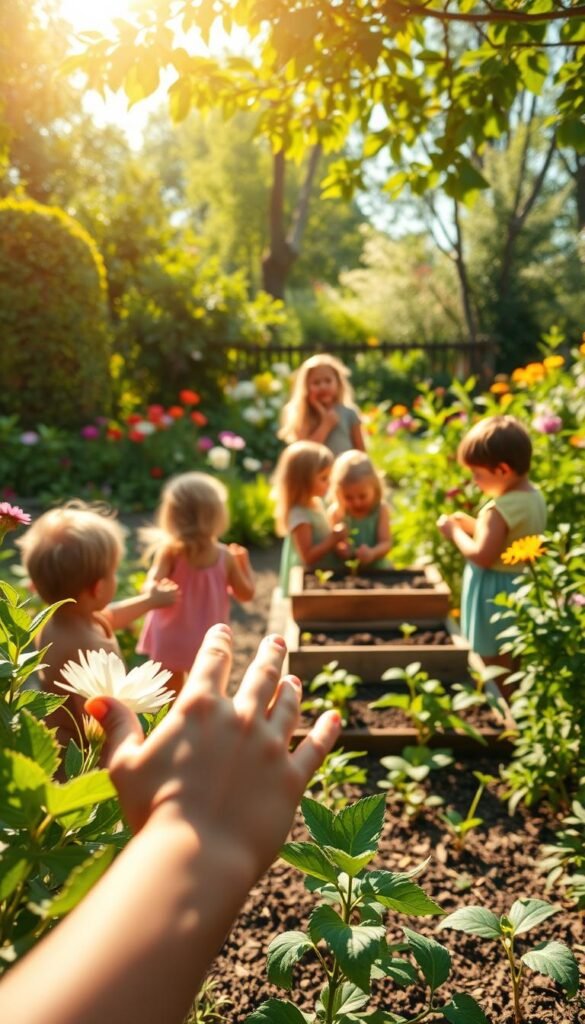
Picture curious fingers tracing leaf veins and eager voices asking when their sunflowers will peek through the dirt. Early childhood settings thrive when little learners interact directly with living materials. These experiences turn abstract concepts into tangible discoveries.
Benefits of Hands-On Learning for Children
Young minds absorb lessons best through multi-sensory engagement. Digging in dirt strengthens hand muscles, while sorting seeds introduces early math patterns. A 2023 study showed kids who garden score 12% higher on coordination tasks than peers using only paper worksheets.
Simple routines like watering sprouts teach cause-and-effect thinking. “If I forget my plant, its leaves droop,” one 4-year-old noted during a classroom project. These moments build responsibility and critical thinking naturally.
| Activity | Skills Developed | Learning Outcome |
|---|---|---|
| Seed Planting | Fine motor control | Pre-writing readiness |
| Measuring Growth | Number recognition | STEM foundations |
| Tasting Herbs | Sensory awareness | Healthy food curiosity |
Connecting Nature with Early Childhood Education
Outdoor exploration feeds developing brains. When kids chart beanstalk growth daily, they grasp time concepts better than through calendar drills. Gardening activities become living science labs where earthworms teach ecosystem roles.
Group projects foster teamwork as children coordinate watering schedules. One teacher shared, “Our class salad party after harvesting lettuce created more veggie fans than any nutrition lecture.” These shared successes build community alongside cognitive skills.
Developing Your Weekly Lesson Plan Framework
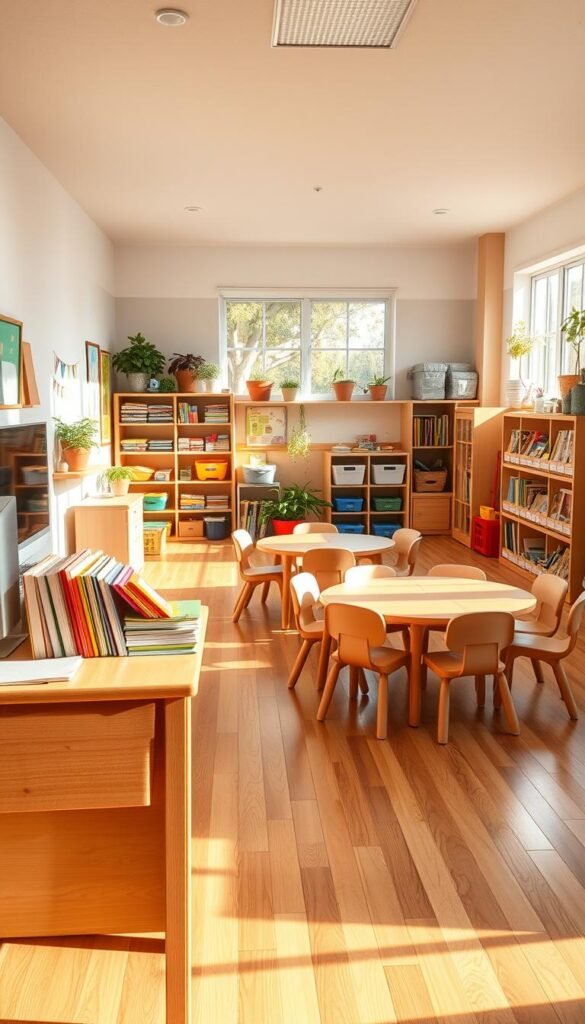
Creating a rhythm that balances discovery and routine helps young learners thrive. A thoughtful framework guides exploration while leaving room for spontaneous moments of wonder. Let’s explore how to craft schedules that nurture curiosity and growth.
Designing Interactive Exploration Sessions
Start each day with a clear focus that builds on prior knowledge. Monday’s introduction to growth basics might include feeling soil textures and predicting seed changes. By Wednesday, hands-on planting sessions turn theory into action as children fill pots with hopeful anticipation.
Mix movement-based tasks with reflective moments. After measuring sprouts on Tuesday, transition to leaf-rubbing art projects. This approach keeps energy levels balanced while reinforcing concepts through multiple senses. Weekly themes ideas become springboards for creativity when paired with varied activity types.
Crafting Daily Learning Flow
Alternate between group instruction and independent discovery periods. Morning circle time could involve reading stories about root systems, followed by individual seed-starting stations. Friday’s review games let children showcase their knowledge through role-play scenarios.
Build in natural transitions through care routines. Watering time becomes both a science lesson and mindfulness practice. One teacher notes, “Our daily check-ins teach patience – we measure progress, not perfection.” This rhythm helps children connect classroom learning with real-world applications.
Plants and Gardening Preschool Theme: Weekly Lesson Plans
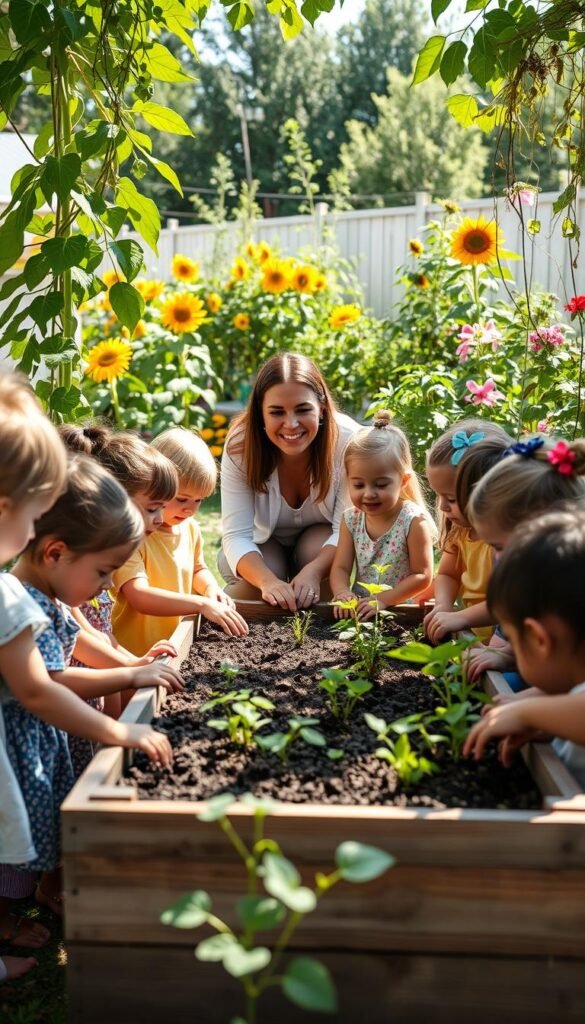
Structured yet adaptable schedules turn every week into a journey from seed to sprout and beyond. Our ready-to-use resources eliminate guesswork while keeping young learners engaged through hands-on exploration activities. Each day builds new skills through sequenced experiences that connect nature with core learning areas.
You’ll appreciate how materials cater to different settings – urban windowsills or backyard plots work equally well for preschoolers. Monday might start with seed comparisons, while Friday celebrates sprouts with measurement games. Every task links to early science standards without feeling like formal instruction.
The plans shine through practical support features:
- Clear lists of everyday items needed for each exercise
- Multiple activity options based on group size and space
- Conversation starters that deepen understanding
Flexibility remains key. Swap suggested flowers for vegetables if that sparks more interest. Extend watering responsibilities into teamwork challenges. One homeschool parent noted, “The framework helped us create routines while still following my child’s curiosity about worm habitats.”
Through these organized approaches, preschoolers develop academic foundations and environmental appreciation. Watching radishes emerge from soil they tended makes concepts real in ways worksheets never could.
Sensory and Fine Motor Activities in the Garden
Watch as young explorers discover the world through muddy hands and sprouting seeds, turning every garden corner into a learning adventure. These experiences strengthen coordination while satisfying natural curiosity about textures and growth patterns.
Tactile Learning Through Earth Elements
Let little hands compare fluffy potting soil with gritty sand – their wrinkled noses at compost’s earthy smell become science lessons in disguise. Set up water exploration stations where droplets create mud rivers, teaching cause-effect relationships through play. “The wet dirt sticks better to my shovel!” exclaimed one 4-year-old during a recent garden-themed sensory bins activity.
Develop pincer grips by having children plant sunflower seeds using thumb-and-forefinger pinches. Tearing newspaper for mulch strengthens hand muscles needed for writing. These purposeful tasks build skills while maintaining engagement through varied textures.
Nature-Inspired Creative Expression
Transform garden treasures into masterpieces with leaf stamp paintings or flower petal collages. Create temporary seed tape murals using glue sticks and recycled paper – perfect for practicing patterns. One teacher shared, “Our bean-threaded necklaces became counting tools during math time.”
Mix art with pretend play using playdough garden beds shaped like pumpkins or carrots. Children mold imaginary crops while discussing colors and sizes. These projects merge creativity with cognitive development, proving learning grows best when hands stay busy.
Incorporating Science and Math Through Gardening
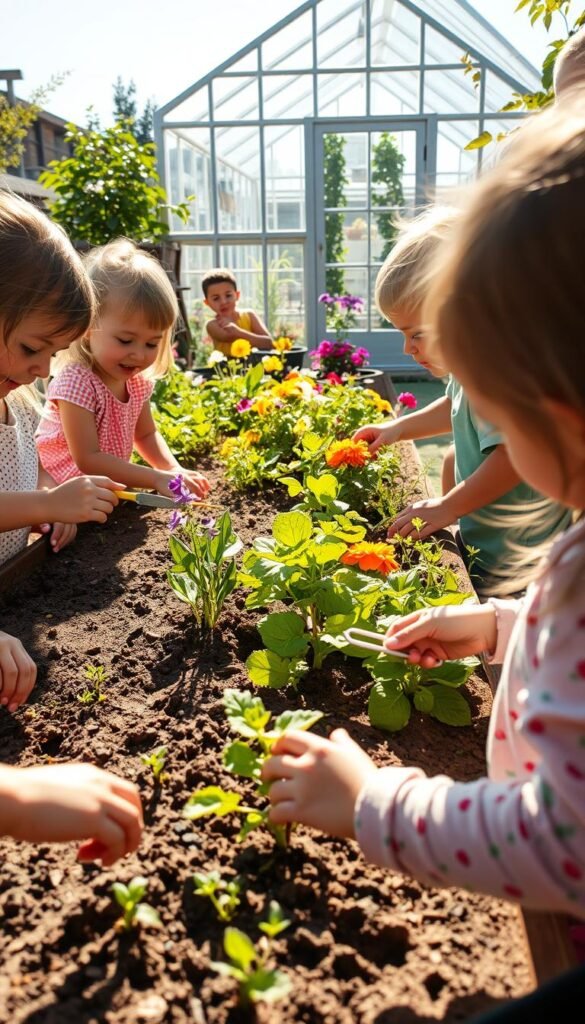
Every seed planted becomes a lesson in patience and numbers as young minds chart progress and predict outcomes. Gardens offer natural settings to explore patterns, quantities, and biological processes through hands-on discovery.
Exploring Plant Life Cycles with Interactive Experiments
Clear plastic bags turn into science windows when you sprout beans with damp paper towels. Children gasp watching roots snake downward while stems reach for light. Try growing identical seeds in sunny and dark spots – the visible differences spark questions about why plants need specific conditions.
Simple moisture tests teach observation skills. “My finger feels cold dirt here but dry over there!” one preschooler noticed during a soil check. These moments build critical thinking as kids connect care routines with growth results.
Counting, Measuring, and Graphing in Garden Activities
Turn flower beds into math playgrounds with ten-frame cards matching blossom counts. Numbers 1-20 come alive as petals multiply daily. Measuring activities shine when kids line up blocks beside stems – “My sunflower is six cubes tall!” becomes a proud announcement.
| Activity | Skills Practiced | Tools Used |
|---|---|---|
| Seed Sorting | Classification | Magnifying glasses |
| Growth Tracking | Data Recording | Paper strip rulers |
| Water Measurement | Volume Estimation | Child-sized pitchers |
Create visual graphs showing which plants grew fastest. Color-coded stickers on charts help preschoolers compare results without reading numbers. These activities build math skills through tangible experiences that feel like play.
Integrating Language Arts Through Garden Story Time

Listen to giggles erupt as storybook characters sprout from pages into real-life garden adventures. Literacy blossoms when children’s books bridge classroom shelves with soil-stained hands. Classic titles like The Tiny Seed transform reading sessions into interactive journeys where words take root in young minds.
Using Garden-Themed Books to Spark Imagination
Eric Carle’s vibrant illustrations in The Tiny Seed make seed dispersal tangible. Ask little ones to blow pretend dandelion fluff while reading about the seed’s journey. Lois Ehlert’s Planting a Rainbow becomes a color hunt game – “Find three red flowers like in our book!”
Ruth Krauss’ The Carrot Seed teaches determination through simple text. After reading, try easy seed-starting projects where kids nurture their own “impossible” plants. One teacher shared, “Our class chanted ‘I knew it would grow!’ just like the book’s hero when radishes sprouted.”
| Activity | Skills Enhanced | Book Pairing |
|---|---|---|
| Seed Journey Role-Play | Creative Expression | The Tiny Seed |
| Color Matching Game | Visual Discrimination | Planting a Rainbow |
| Patience Journaling | Emotional Regulation | The Carrot Seed |
Kate Messner’s Up in the Garden and Down in the Dirt invites tactile exploration. Create a sensory bin with soil layers and plastic worms to mirror the story’s underground world. Children grasp complex terms like “pollinate” when acting out bee roles with flower props.
End sessions by letting kids “read” to plants – a practice shown to boost confidence in emerging readers. Their whispered stories to sprouts weave literacy skills with nurturing instincts, creating lifelong lovers of both books and blooms.
Safe and Fun Gardening Activities for Preschoolers
Transform outdoor spaces into discovery zones where safety and wonder grow side by side. Creating secure environments lets little ones investigate earth’s treasures without unnecessary risks. Thoughtful preparation turns potential hazards into teachable moments about gentle interactions with nature.
Choosing Tools That Grow With Curiosity
Opt for lightweight, rounded-edge tools sized for small hands. Plastic shovels with ergonomic handles build confidence during digging tasks. Try colorful watering cans with dual handles – perfect for developing grip strength while nurturing seedlings.
Select fast-growing, non-toxic plants like snap peas or sunflowers. These choices offer quick rewards and safe tactile experiences. Always check soil areas for sharp objects before exploration begins. A quick sift through dirt prevents surprises during sensory-rich play.
Mix structured activities with free exploration. Create “dig zones” with soft soil for unrestricted play. Pair this with guided tasks like arranging smooth stones around flower beds. Watch teamwork blossom as children design protective borders for their green friends.
Remember: adult eyes work best when paired with child-sized independence. Simple ground rules like “gentle touches” help maintain joyful, safe exploration. Celebrate each discovery – whether a wiggly worm or perfect pebble – to fuel lifelong nature appreciation.
